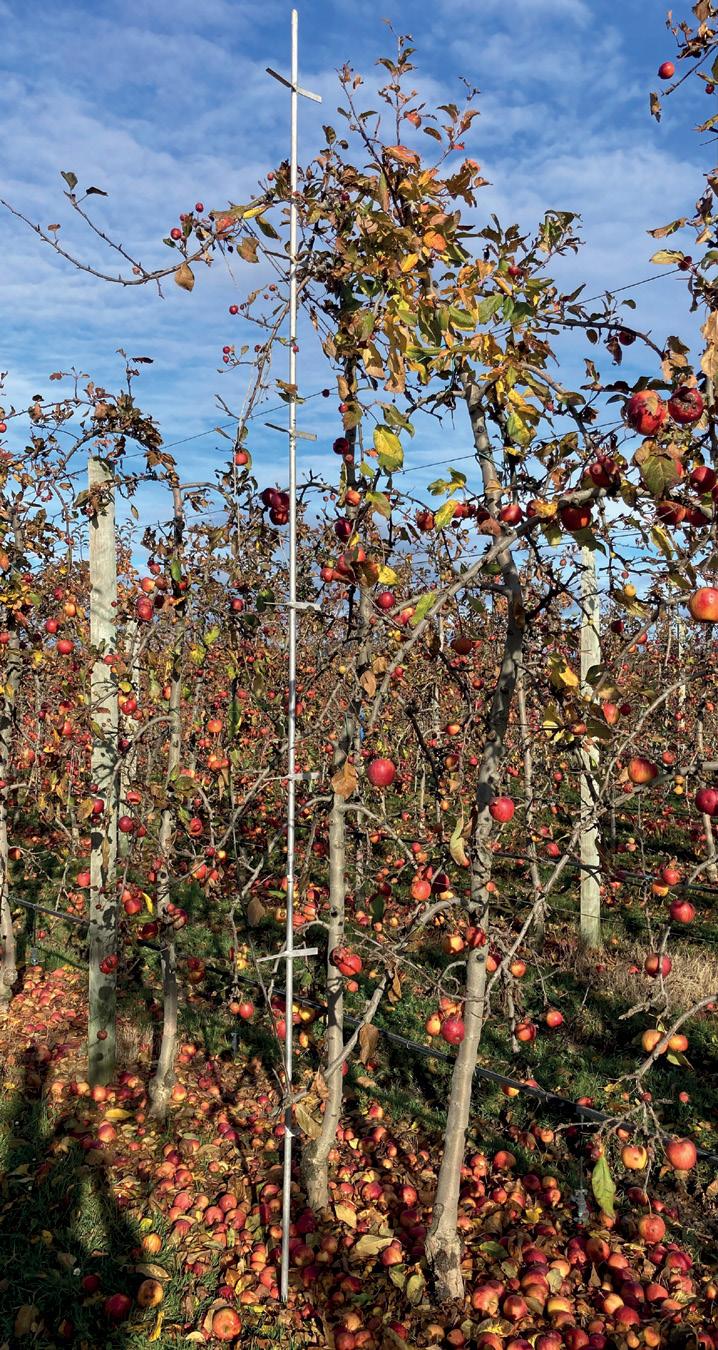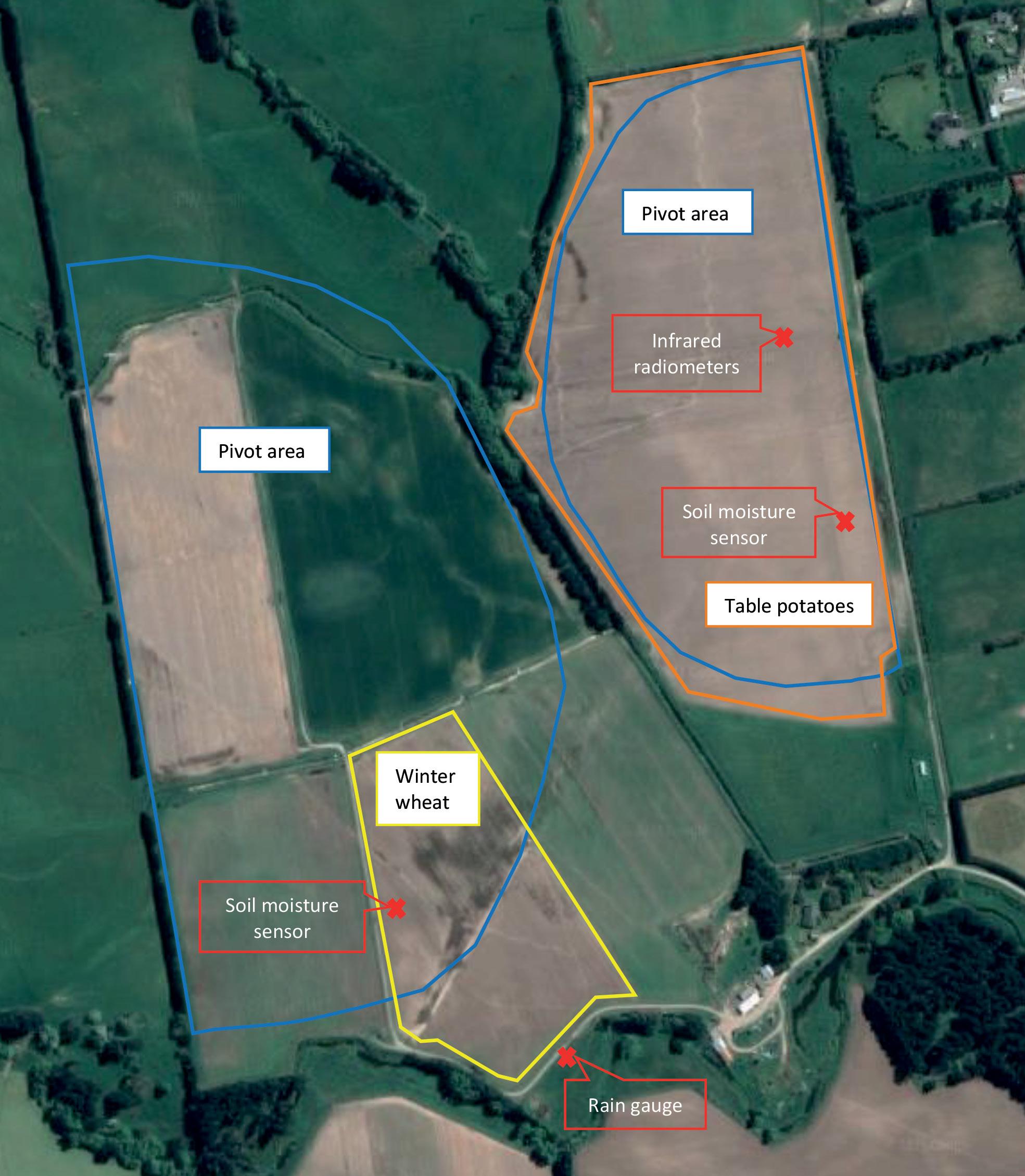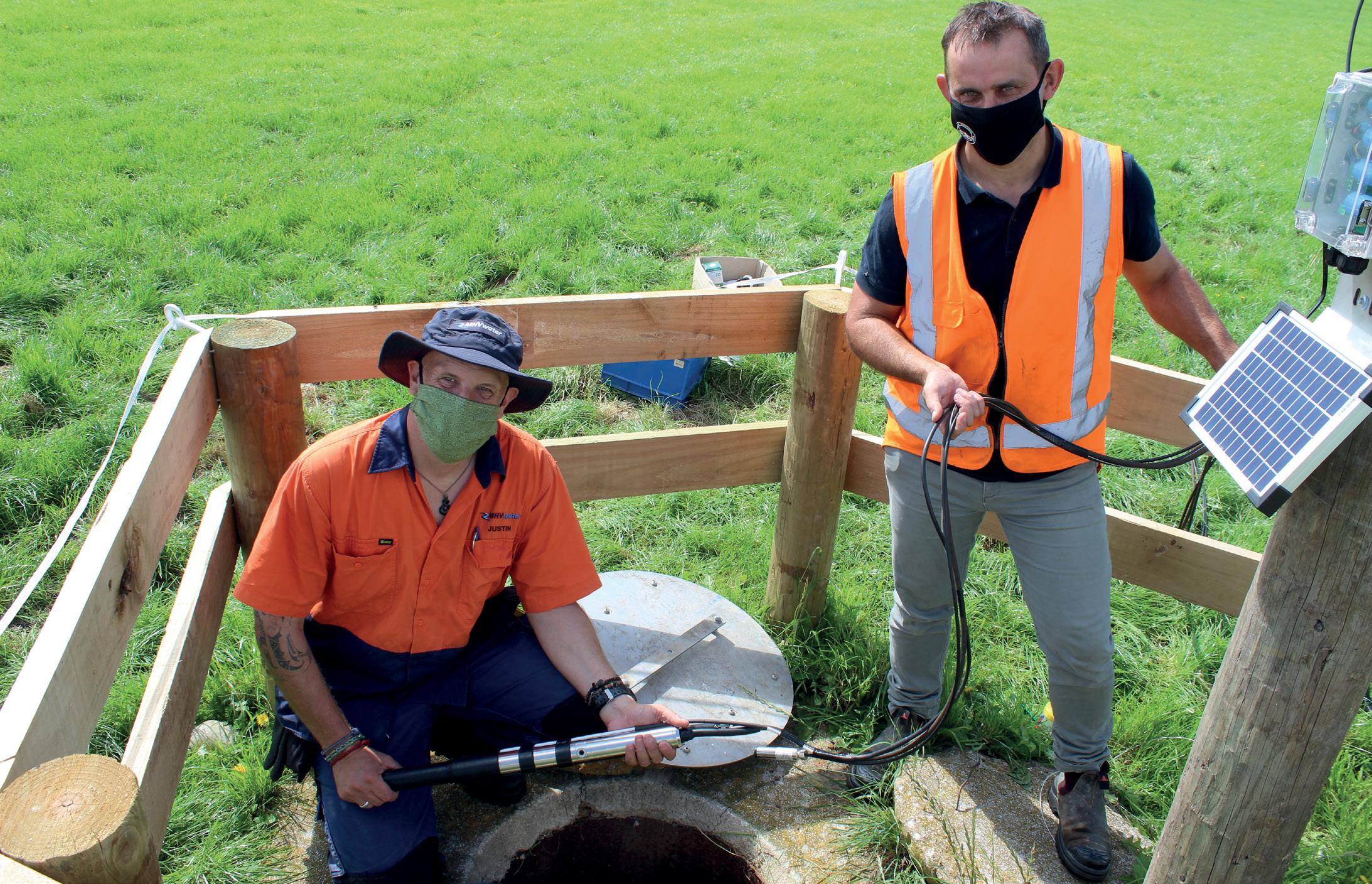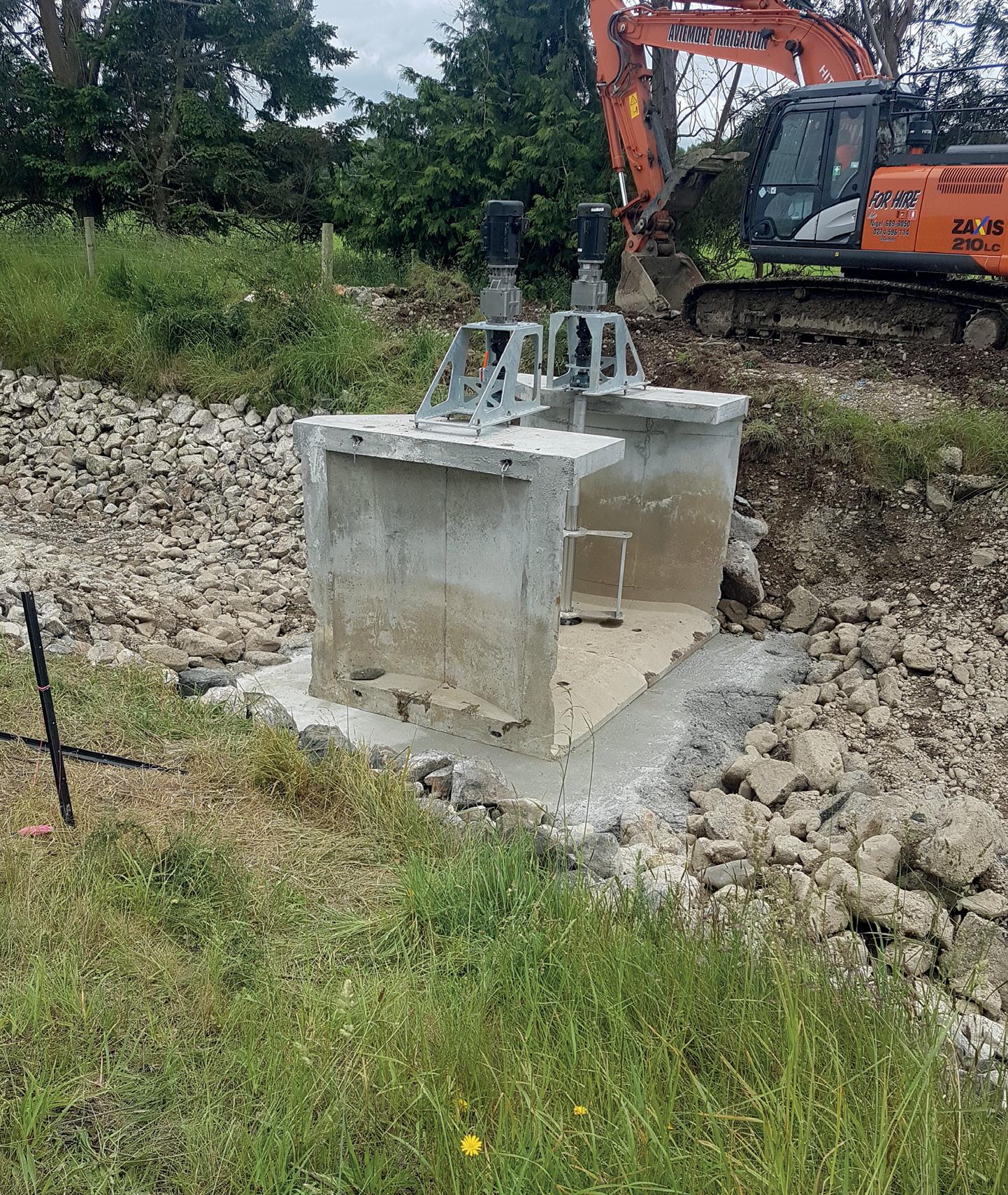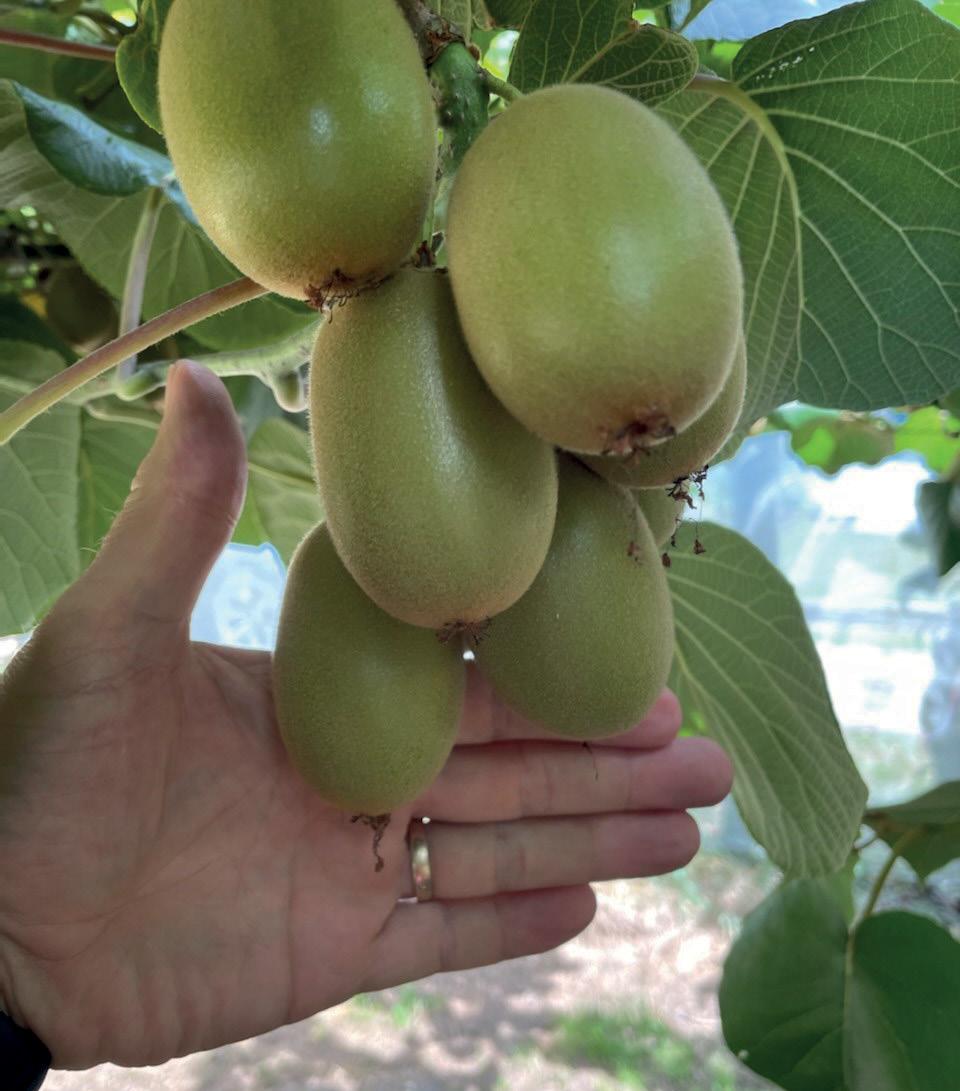
7 minute read
Cover Story: The important role water plays in growing kiwifruit
Irrigating the right amount in the right place in a Canterbury summer
With irrigation season in full steam and Canterbury’s long hot and dry days upon us, it’s vital that we use our most precious resource carefully.
Advertisement
Environment Canterbury’s Waimakariri and Hurunui Waiau Zone Delivery lead Marco Cataloni says people are strongly encouraged to irrigate efficiently and consider their overall water use.
“Well managed irrigation systems protect water quality and quantity, save on pumping costs and protect soil structure, ultimately retaining valuable nutrients.” Cataloni says checking soil moisture deficit sent to your app from soil moisture probes in the field – as well as checking the weather forecast – is the best way to ensure you can calculate how much to irrigate to ensure you’re putting the optimum amount of water on your land.
Make sure your irrigator is watering only where you intend
While Canterbury’s flat plains are ideal for large centre pivot irrigators, our winds – especially the dreaded nor-westers, are not.
Not only can strong wind gusts endanger important infrastructure, but water users need to ensure that spray is not being blown on to areas not intended. One key consideration for those irrigating is making sure precious water stays off the road. “It’s vital irrigation systems only water within people’s property boundaries and not on the roads where it causes a hazard,” Cataloni says. “The most common reasons for water going over-boundary are the extra spray from end guns on pivot irrigators, and travelling irrigators getting too close to roads.” On hot, windy days, irrigation water sprayed onto roads can contribute to road deterioration and make the hot road surface slippery, making conditions unsafe for road users. “These problems can be easily solved,” Cataloni says. “Pivots need to be programmed so that the end guns shut off when the irrigator’s arc nears your property boundary. “Travelling irrigators like roto-rainers should be set up so they stop well before the boom reaches a point where it is spreading water beyond the property.”
What to do if you see irrigation on the road
• Report it using the Snap Send Solve app • Contact Environment Canterbury on 0800 324 636 • If there is an immediate danger to road users, contact the police.
Irrigation restrictions
Cataloni says it’s important anyone carrying out irrigation ensures they keep up to date with the latest restrictions. Whether you have a consent to take and use water, or use water under permitted activity rules, your water use is subject to conditions and restrictions, and it is your responsibility to check you are permitted to take water before doing so. “Restrictions relate to specific areas, which may relate to the consent you hold,” says Marco Cataloni. “They are put in place to help reserve water when stock is low.”

Marco C a t a l oni

Checking consent conditions and restrictions
Our website has all the tools you need to ensure you are irrigating only when permitted. Visit our consent search page (ecan.govt.nz/consent-search) and enter your water use consent number. If you don’t know your consent number, you can search your business name instead.
Click on the consent number and you will see a list of conditions, including flow and volume limits. You may need to manage your irrigation carefully to ensure you don’t exceed the monthly or annual total irrigation volume set out in your consent conditions, and you need to ensure restrictions are not in place each time you intend to take water. If your water take is connected to a river, you can check our river flow webpage (ecan.govt.nz/riverflow) to see how much water is flowing now and over the last month. Most importantly, all irrigation restrictions are updated daily on our Irrigation Restrictions webpage: ecan.govt.nz/irrigation-restrictions. It is your responsibility to ensure you are complying with these restrictions before you turn on your irrigator. If you need to check whether you are on restriction, you can also call us on 0800 324 636.
Irrigating for lifestyle block owners
If you have your own water supply that is not subject to a resource consent, the use of water for your reasonable domestic needs and for stock drinking water is covered by permitted activity rules. While considered a permitted activity, this water use is still subject to limitations, and water may only be taken where there is no adverse effect on the environment.
Lifestyle block owners can find details on taking water for domestic and stock water purposes in the Guidance on Permitted Activity – Water Takes and Water Permits brochure on the Environment Canterbury website (ecan.govt.nz/useful-information-and-documents). You may also be able to take a permitted volume of water for other purposes depending on the location of your property and other factors.
Environment Canterbury can help determine how much water you can take and whether there are any other considerations you will need to factor into your water use calculations. If you want to know more about irrigation, consent conditions and permitted activity water use, your best first point of contact is your local Environment Canterbury zone team.
Find out more
Check out ecan.govt.nz/zone-specific-rules-and-information for your region. Your local Land Management Advisor will be able to give guidance on this and all sorts of other issues.
Is the grass really greener?

Regenerative agriculture is gaining attention and momentum as a newer, greener way of farming. But it’s not new at all – in fact, it’s how farming was done for most of human history.
Watching grass grow is not exactly famous as an exciting activity, but for people learning about regenerative agriculture, it is taking on a new level of interest. The Ashburton Water Zone Committee – a group of local rūnanga, council and community representatives that represent the Ashburton district – visited a Westerfield dairy farm late last year to see how regenerative agriculture can make a big difference to a farm’s environmental footprint. The Align Clareview regenerative farm system aims to improve soil health and biodiversity, while reducing nitrogen leaching to groundwater.
What does pasture look like in a regenerative system?
Clareview’s transition to regenerative farming started in the 2019-20 season and, after encouraging results, Align decided to conduct a trial and sow 50% of the farm with regenerative pasture, so the traditional and regenerative systems can be compared on the same property.
The cows in the regenerative system eat a range of mixed and diverse species within one paddock, including chicory, plantain, clover, lucerne and ryecorn. The animals graze the paddock to a much higher residual height than a conventional grazing. This protects the soil and its root structure and reduce run-off to waterways. Align Farms’ Chief Executive Rhys Roberts says that as well as offering the animals a more varied diet and boosting biodiversity – and in turn bringing back native bees, birds and bugs – regenerative agriculture lowers reliance upon conventional synthetic inputs like fertiliser. “We’re proud to have a lower impact on our community and to be putting some more options out there in front of people in the industry,” Roberts says. “It’s all about finding a better balance – maintain a living but lowering our impact.”
Results are there for all to see
Align Clareview shares weekly data on their website, where the conventional and regenerative sides of the farm are compared. You can visit alignfarms.co.nz/regenerative-data to see for yourself. Roberts says they’re still early in their regenerative journey, but is keen to publish results. “We’re happy to share what we’re learning as working farm transitioning to more regenerative practices – and we are definitely still learning in this area,” he says. “We’ve had 20 years of conventional farming experience and only about 20 minutes of regenerative farming!” Ashburton Water Zone Committee Chair William Thomas says initiatives like those at Align Clareview highlighted simple the measures, like the introduction of diverse pasture species and increasing the grazing round length, which could collectively make a big difference in the catchment if other farms got on-board.
Taking action together to shape a thriving and resilient Canterbury, now and for future generations. Toitū te marae o Tāne, toitū te marae o Tangaroa, toitū te iwi. www.ecan.govt.nz



